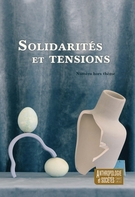FR :
Dans le Pacifique Sud, la période de reproduction du ver marin Palola viridis, balolo en fidjien, est un évènement annuel marquant pour de nombreuses sociétés. Cet article examine deux cas ethnographiques originaux, l’un dans l’Est fidjien, l’autre dans l’ouest. Dans les deux cas, le balolo est récolté rituellement pour contribuer au renouveau, tant en mer que sur la terre ; cependant, l’unité sociale de référence n’est pas la même. À l’est le balolo fait partie de la cosmologie du vanua, alors qu’à l’ouest il s’agit du yavusa. Les femmes du vanua attirent rituellement le balolo venant de l’espace outre-récif, l’accueillant comme s’il était un chef étranger ou un invité de marque. Dans le yavusa, le travail rituel du prêtre traditionnel provoque l’apparition du balolo dans le récif. L’organisation sociale, dans le vanua autour d’un « roi étranger » ou dans le yavusa autour d’un « frère », reflète ce rapport différent au monde extérieur et à la source du renouvellement du ver marin.
EN :
In the South Pacific, the breeding season of the marine worm Palola viridis, balolo in Fijian, is a significant annual event for many societies. This paper examines two original ethnographic cases, one in East Fiji, the other in the West. In both cases, balolo is ritually harvested to contribute to the renewal, both at sea and on land; however the social unit of reference is not the same. In the east, balolo is part of the vanua cosmology, while in the west it is part of the yavusa. The women of the former ritually attract the balolo from across the reef, like a foreign chief or a distinguished guest. In the second, the ritual work of the traditional priest brings out the balolo within the reef. The social organisation, as a vanua around a “stranger king,” or as a yavusa around a “brother,” reflects this different relationship to the outside world and to the source of its renewal.
ES :
El en Pacifico del sur, el periodo de reproducción del gusano marino Palola viridis, balolo en fiyiano, es un evento anual importante en muchas sociedades. Este artículo examina dos casos etnográficos originales, uno al este de Fidji, el otro al oeste. En ambos casos, el balolo se colecta ritualmente para contribuir al renacimiento, tanto en el mar que sobre la tierra. Sin embargo, la unidad social de referencia no es la misma. Al este el balolo forma parte de la cosmología del vanua, mientras que al oeste forma parte del yavusa. Las mujeres del primer caso atraen ritualmente al balolo que proviene del espacio más allá del arrecife, como si fuera un jefe extranjero o un invitado especial. En el segundo caso, el trabajo ritual del sacerdote tradicional provoca el surgimiento del balolo al interior del arrecife. La organización social, en vanua en torno de un «rey extranjero», o en yavusa, en torno a un «hermano», refleja la relación diferente hacia el mundo exterior y a la fuente de su renacimiento.




